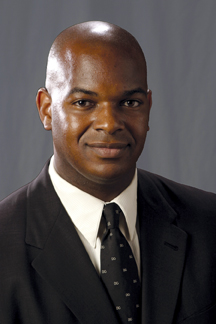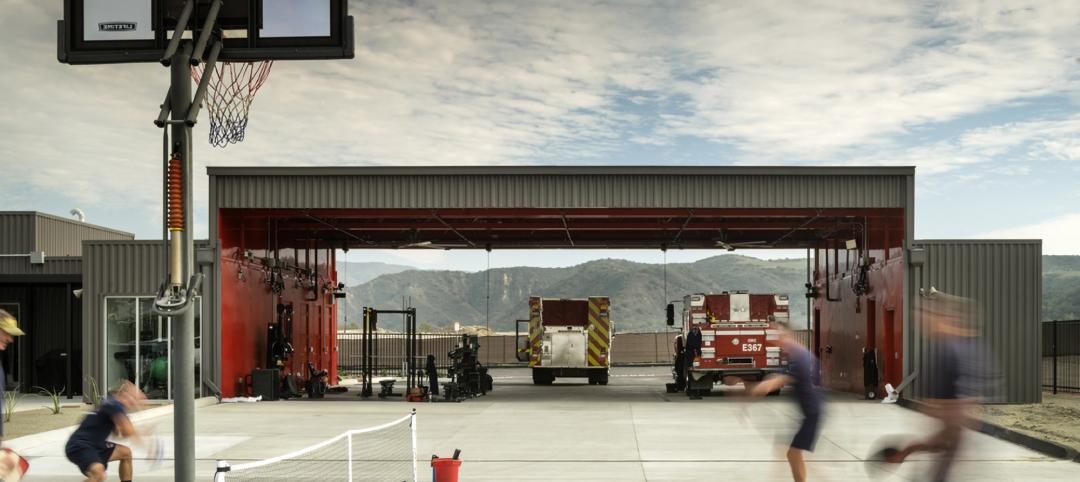BD+C: How is the market for design services in Indianapolis these days? What’s in demand? How is business holding up?
Sanford E. Garner: We received a nice influx of ARRA money, mostly for transportation projects, but more than likely when that work is done, a lot of contractors are going to be wondering where they’re going to get work. The commercial office market is soft. The single-family housing market seems to be turning positive, and there are still a number of condo projects going to rental—the banks are not as desirous of financing condominiums.
We’re fortunate in being in the third phase of a capital improvement program for our consolidated schools system, so there’s a reasonable amount of work for K-12. Higher education seems to be opening up a bit in RFPs and projects. The area that we’re seeing a lot of work in is anything that is tax-credit related, such as tax-related low-income housing projects, even more so than mixed-income. That’s pretty strong.
BD+C: What’s about other building sectors in Indy?
SEG: We’ve finished the majority of our major public-based projects—a new basketball arena, the football stadium, a new convention center, and a new airport—and I don’t imagine we’ll have anything that large for a while. However, we are working on our county hospital [the new Wishard Hospital, with 315 in-patient and 200 outpatient beds, a 2,400-car parking garage, a 90-bed emergency department, a women’s health clinic, and a central energy plant, currently under construction and seeking LEED Silver certification, financed through a $754 million referendum in 2009]. There’s also a new FBI field office [a $39.8 million project northeast of the city] and some court buildings.
We’re starting to see a few more developer-led projects, in particular the North of South project, where Eli Lilly is working with a developer [Buckingham Companies] to develop housing for their employees [320 rental units]. It will also have a boutique hotel [from Dolce Hotels & Resorts], 40,000 sf of retail and parking, and a full-service Y [a new 75,000-sf facility].
BD+C: Your Fall Creek Place mixed-use housing project won awards from the NAHB, Professional Builder, the Urban Land Institute, and the American Planning Association. What lessons did you learn from it?
SEG: One of the lessons is that we need to address potential problems like gentrification early in the process. In the case of Fall Creek, 51% of the homeowners were 80% below area median income (AMI), with a five-year tax abatement. It was hugely successful—we sold out phase one in about eight months, but the AMI kept increasing, and you’re coming off a tax abatement in year six, just before the market crashed. So, for mixed-income projects like this, you might want to consider looking at a 10- to 15-year period. We tried to do a good job with gentrification going in, but any time you significantly increase the value of surrounding properties it’s going to increase property taxes. Having that kind of discussion early on was hugely important.
Another lesson is that private-sector development expertise is a must-have. We spent a lot of time trying to get the private sector involved. We succeeded in engaging several developers that were relative newcomers to this type of project, which meant having to do a lot of education.
We also learned that the greatest marketing tool is always visual impact. We had six prototype houses and two other projects from developers, all adjacent to historic buildings that were being rehabbed. We had a nice mass of redevelopment going on, and that lent confidence to the project.
The other thing that we did well in this case was maximizing public/private partnerships. The city leveraged its relationship with the utility companies to supply incentives, and we worked with the banks to provide pre-approved loans for a point or so below prime. Financial incentives like that are absolutely necessary for mixed-income projects.
BD+C: You spoke at your alma mater, Howard University, recently on “the profitability of diversity”? What did you mean by that phrase?
SEG: We are at the point where companies are realizing that it can be profitable to be diverse—in gender, race, religion, sexual orientation. In the design industry, the better your understanding of those individuals or cultures or religions, the better you’re going to be able to market to them.
There’s even the profitability of diversification in your company. Our firm started with architecture and added interiors, urban planning, furniture design, graphics and communications, and construction observation for flat work. Within a changing market, there is a benefit of being a generalist, but there’s also need for specificity within areas of our industry.
BD+C: As president, what are your objectives for the National Organization of Minority Architects?
SEG: 2012 will be our 40th anniversary. We are transitioning from a more socially based organization into more of a professional organization. We have operated more as a social organization, since many of our members are also AIA members. We are at the point where we are changing ourselves to purposely become more deliberate in what we do, running NOMA truly as a nonprofit, to leverage what we have as an organization.
I call my leadership platform “MECCA”—mentorship, education, community, collaboration, and authority. We’re looking to strengthen our foundation, to give more scholarships to minority students, provide more economic backing for our members, and strengthen our affiliate relationships.
I also want to increase our value proposition: What benefit does NOMA bring to our members, with so many of our people out of work?
Related Stories
Codes | Feb 9, 2024
Illinois releases stretch energy code for building construction
Illinois is the latest jurisdiction to release a stretch energy code that provides standards for communities to mandate more efficient building construction. St. Louis, Mo., and a few states, including California, Colorado, and Massachusetts, currently have stretch codes in place.
Giants 400 | Feb 8, 2024
Top 10 Telecommunications Building Architecture Firms for 2023
Arcadis North America, CSArch, Interior Architects, and TETER top BD+C's ranking of the nation's largest telecommunications building architecture and architecture/engineering (AE) firms for 2023, as reported in Building Design+Construction's 2023 Giants 400 Report.
Giants 400 | Feb 8, 2024
Top 50 Public Library Architecture Firms for 2023
Quinn Evans, McMillan Pazdan Smith, PGAL, Skidmore, Owings & Merrill, and Gensler top BD+C's ranking of the nation's largest public library architecture and architecture/engineering (AE) firms for 2023, as reported in Building Design+Construction's 2023 Giants 400 Report.
Giants 400 | Feb 8, 2024
Top 60 Performing Arts Center and Concert Venue Architecture Firms for 2023
Populous, DLR Group, Gensler, HGA, and Perkins Eastman top BD+C's ranking of the nation's largest performing arts center and concert venue architecture and architecture/engineering (AE) firms for 2023, as reported in Building Design+Construction's 2023 Giants 400 Report.
Giants 400 | Feb 8, 2024
Top 70 Museum Architecture Firms for 2023
SmithGroup, Gensler, Ayers Saint Gross, Quinn Evans, HGA, and Cooper Robertson head BD+C's ranking of the nation's largest museum and gallery architecture and architecture/engineering (AE) firms for 2023, as reported in Building Design+Construction's 2023 Giants 400 Report.
Architects | Feb 8, 2024
LPA President Dan Heinfeld announced retirement
LPA Design Studios announced the upcoming retirement of longtime president Dan Heinfeld, who led the firm’s growth from a small, commercial development-focused architecture studio into a nation-leading integrated design practice setting new standards for performance and design excellence.
Market Data | Feb 7, 2024
New download: BD+C's February 2024 Market Intelligence Report
Building Design+Construction's monthly Market Intelligence Report offers a snapshot of the health of the U.S. building construction industry, including the commercial, multifamily, institutional, and industrial building sectors. This report tracks the latest metrics related to construction spending, demand for design services, contractor backlogs, and material price trends.
Giants 400 | Feb 6, 2024
Top 80 Religious Facility Architecture Firms for 2023
Parkhill, FGM Architects, GFF, Gensler, and HOK top BD+C's ranking of the nation's largest religious facility architecture and architecture engineering (AE) firms for 2023, as reported in the 2023 Giants 400 Report.
Modular Building | Feb 6, 2024
Modular fire station allows for possible future reconfigurations
A fire station in Southern California leveraged prefab, modular construction for faster completion and future reconfiguration.
Giants 400 | Feb 5, 2024
Top 30 Entertainment Center, Cineplex, and Theme Park Architecture Firms for 2023
Gensler, JLL, Nelson Worldwide, AO, and Stantec top BD+C's ranking of the nation's largest entertainment center, cineplex, and theme park architecture and architecture engineering (AE) firms for 2023, as reported in the 2023 Giants 400 Report.

















